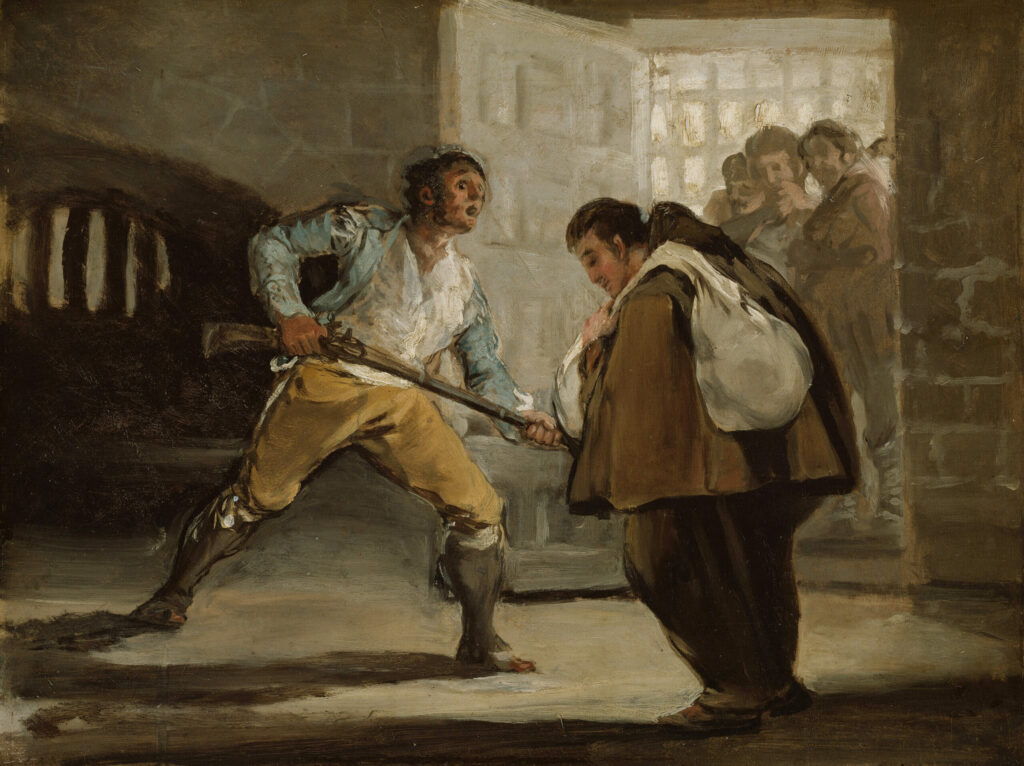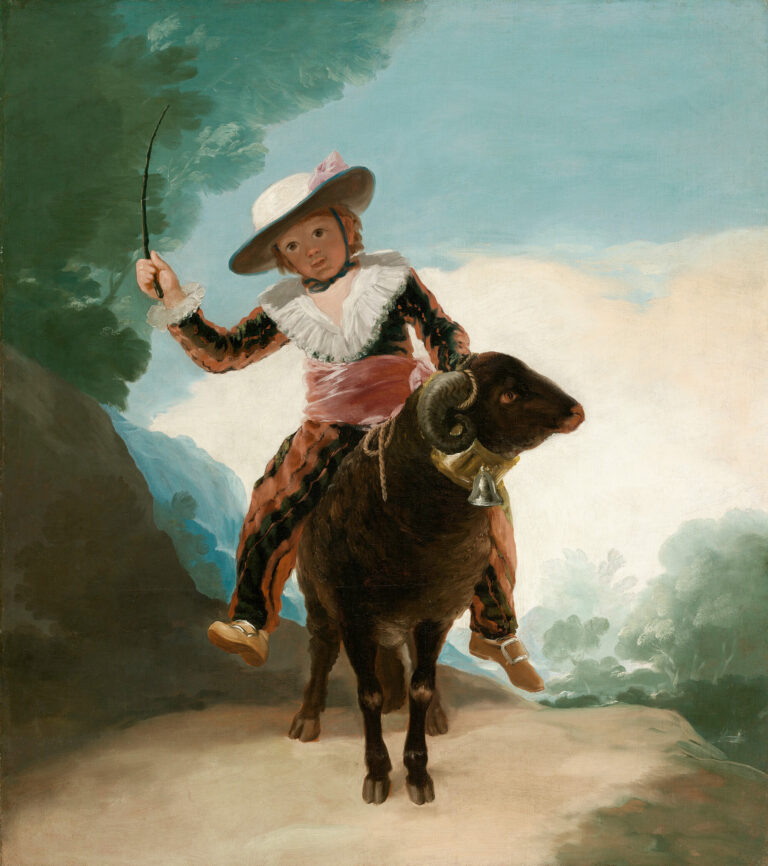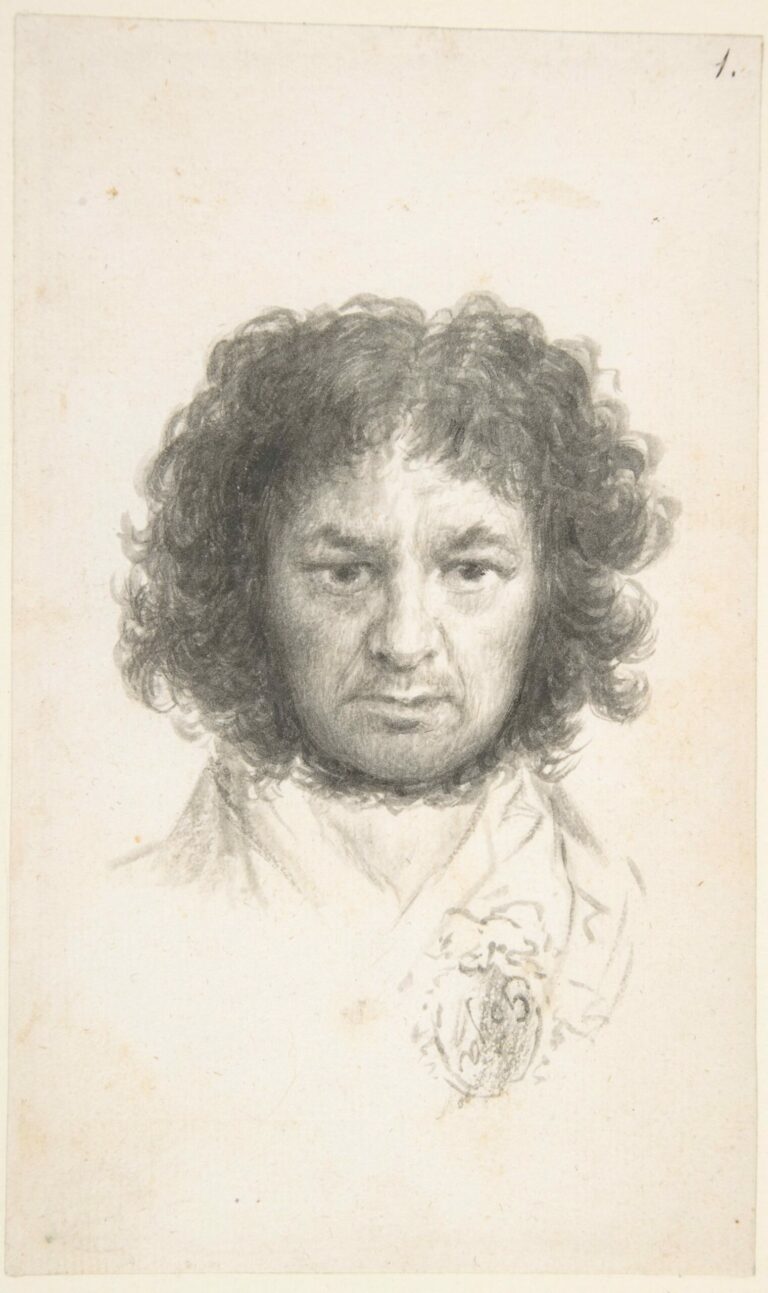
El Maragato Threatens Friar Pedro de Zaldivia with His Gun testifies to Francisco de Goya’s interest in contemporary current events and Spanish popular culture.
Painted around 1806, this work belongs to a series of small narrative paintings inspired by the capture of the famous bandit El Maragato by the courageous Friar Pedro de Saldivia. The scene captures the dramatic moment when the criminal, armed with a rifle, threatens the religious man. El Maragato, dressed in blue and ochre, in an aggressive posture, faces the monk in brown habit, apparently submissive but secretly determined. Goya perfectly masters the effects of chiaroscuro, concentrating light on the main figures while the witnesses are sketched as blurred silhouettes in the background. This technique reveals Caravaggio’s influence while announcing modern realism.
Further information
- El Maragato Threatens Friar Pedro de Zaldivia with His Gun, c. 1806, by Francisco José de Goya y Lucientes
- 41.6 × 51.2 cm (16 3/8 × 20 1/8 in.) with frame
- The Art Institute of Chicago – European Painting and Sculpture, Gallery 220
- https://www.artic.edu/artworks/20692/el-maragato-threatens-friar-pedro-de-zaldivia-with-his-gun
Francisco José de Goya y Lucientes (1746-1828), Aragonese painter, remains one of the most complex and influential figures in European art. Trained in José Luzán’s workshop then in Madrid under Anton Raphaël Mengs, he quickly became official painter to the Spanish court. His career spanned major political upheavals. This instability nourished a protean body of work oscillating between brilliant courtly portraits, genre scenes, and nightmarish visions. He developed a more personal and critical pictorial language, culminating with the Caprichos, the Disasters, and the Black Paintings. A precursor of Romanticism and modern art, Goya durably influenced Manet, Picasso, and Expressionism through his technical freedom and his ability to probe the depths of the human condition. His genius lies in this unique synthesis between tradition and modernity.




